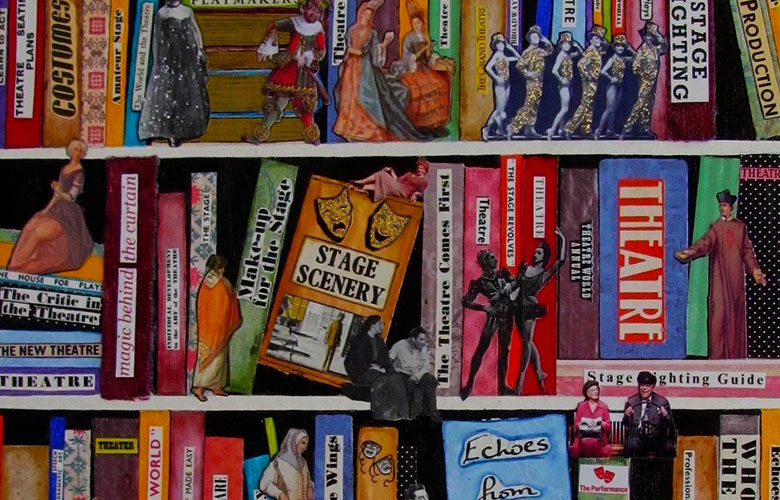
This article is written by Chery Holmes based on an interview with Anna Robb.
My focus on the theatre in my artwork is the culmination of many years experience as a feminist artist in the l970’s, a gay woman at the beginning of the AIDS crisis and as a community organizer with disenfranchised youth and the emerging gay and lesbian movement. As a founding member of Powerhouse Gallery — the first women’s art gallery in Canada, I had to rethink the traditional gallery format and exhibition themes and making statement art came out of that experience.
My social service work with young gay teens exposed me to their crisis issues and troubling emotional agendas and I was introduced to a wide variety of different personality types. I saw firsthand that life changes are difficult to make and that the task can be totally overwhelming for some.
Problem-solving often reflected the interests of the most powerful groups in society, leaving the poor and disenfranchised behind. My work with the lesbian and gay community highlighted the importance of special forums from which to address our social and political agendas. On the larger scene, playwrights like Larry Kramer were talking to audiences about the horrors of AIDS and “The Normal Heart.” My community work with youth evolved to include the writing of short plays and skits and these were performed in a social service agency for both clients and social workers alike.
I painted and exhibited a series of artworks on subordinate others living in difficult circumstances and this show was titled, “Extremes.” During the time that I worked with youth and functioned as director and manager of their small theatrical productions, I found myself referring more and more to play texts for clarification, inspiration and finally the pure joy of reading seamless, poetic, thought-provoking works.
Plays felt gritty to me and I got caught up in the intensity of the works as true-to-life characters grappled with the political and social issues of our time. Plays were a microcosm of life. They asked the “hard” questions. There was no wasted time or space, nothing felt glossed-over and there were no easy answers.
Plays were often the first avenue for confronting difficult social issues, such as AIDS. Plays bring people together and speak to the many types of social injustice. They affirm the plight of victims and articulate their painful experiences. In the sheer beauty of poetry, plays encourage answers and are often a catalyst for major change in our society.
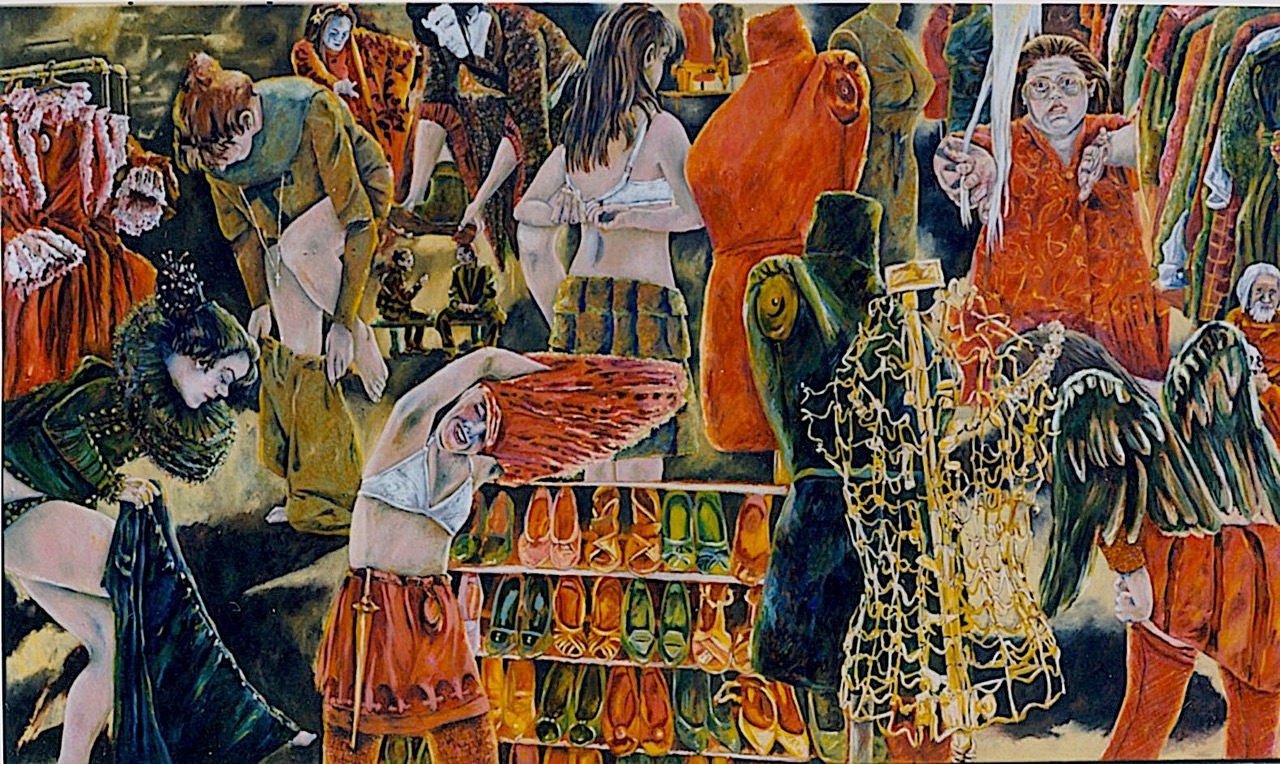
As an artist, my reading of plays, attending live theatre and watching theatre DVDs led to an increasing curiosity about design, costume and lighting. What really goes into a theatrical production? I read the esteemed set designer Jocelyn Herbert’s workbook and was amazed with what she could create for the stage with few materials and low budgets. The set design used for Moss Hart’s, Act One made me rethink composition and layering in my work. A full tour of the Centaur Theatre in Montreal, with the wardrobe mistress Mary Thomas, motivated me to create a very large painting called “Top Girls.” Joe Papp’s Free For All inspired images and motivation to collage a piece called “Delacorte Theatre.”
The flexibility of mixed media serves as a great problem-solver. Restrictions are few and the possibilities are endless. Paint can be used to fill in areas on the work or add colour. A crayon can create texture or release the tightness of a section of the work. Layers can be built up until the many levels of the story shine through. Many different materials help to bring dimension and tactile sensitivity to a piece.
For example, when I was working on the collage, “Joan of Arc, The Stage Play”, I wanted the front row audience and seats to be evident, but not too distracting. After experimenting with several pieces of ribbon and other types of materials, I took a chance and made use of some red mulberry paper. It was the perfect substance for the texture and colour of the seats as it wasn’t too heavy and didn’t weigh down the front of the work. This was also the first time that I made use of a metal fleur de lys, twigs from a lilac tree and soot to enhance and give substance to one of my collages.
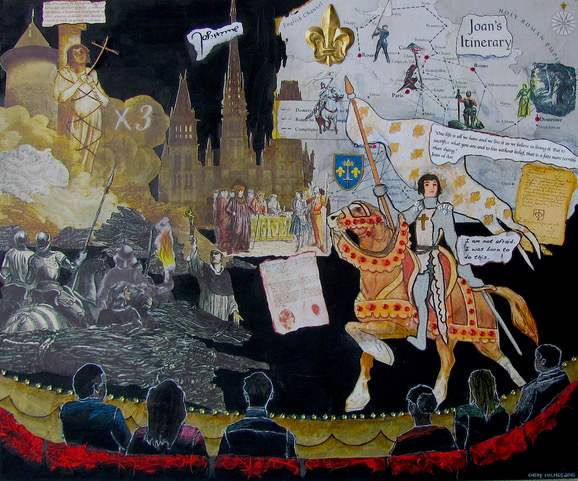
My visual and emotional responses to a work for the theatre often kick-off a series of snapshots in my mind from which I make sketches and small mock-up images on Bristol board. As I work, the piece evolves organically, although there are times when I alter my original vision for something more complex, layered, colourful and artistically intense. The creative process for each mixed media work can take a minimum of a month to complete, or as in the case of “Beautiful Thing”, a period of about three months time. Many layers were built up to tell the story, characters had to be placed in exactly the right positions and their gestures used to complement this political tale, and the British council housing in the background had to set the stage for the mood, characterization, and backstory in this collage.
It may change a little along the way when an area of the image needs more “drama”. In some collages, I use a lot of red or yellow to accent certain areas more than others. I am not afraid to use black because you can create mystery, atmosphere and contrast to highlight the dominant figures in the work. A combination of colours can create a visual pattern which serves to liven up the composition.
There is not an abundance of English language theatre here in Quebec, so I rely mainly on recorded productions of plays and visits to the New York City theatres. When last there, I went to see Arthur Miller’s famed drama, A View From the Bridge at the Lyceum Theatre, directed by Ivo Van Hove with a cast from the Young Vic Theatre in London. This powerful play stirred my imagination and strong feelings about the disenfranchised and resulted in a collage work titled, “A View”.
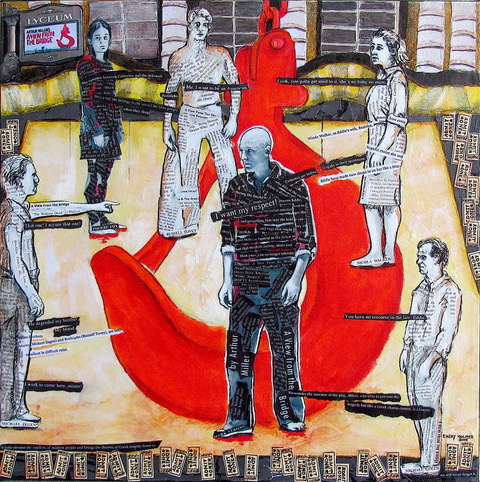
Recently, I went to see the play Indecent written by Paula Vogel and performed at the Segal Centre in Montreal. One of the main themes of this play speaks to the unfairness of discrimination and points to the many ways that people are targeted for their differences. I came away with a compulsion to honour our right to be ourselves in this world, and from this marvellous play I created the artwork, “Censored.”
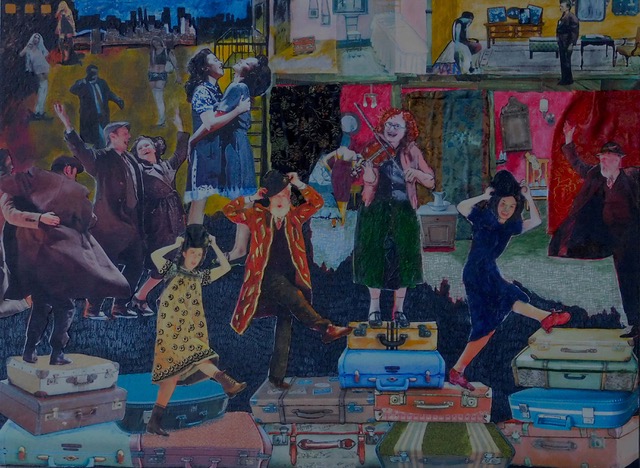
The favourite piece in my theatre collection is “Paintings For Sale.” It is my homage to Maud Lewis, a Canadian folk artist whose primitive paintings brought joy to others, while her own life was a living hell. I felt that the glossy movie “Maudie” about her life did not show the truth of her pitiful existence and sugar-coated a psyche filled with ideas of subordination and fear. I discovered the biographical play about Maud Lewis, World Without Shadows by Canadian playwright, Lance Woolaver, and I got in touch with him to discuss his moving work.
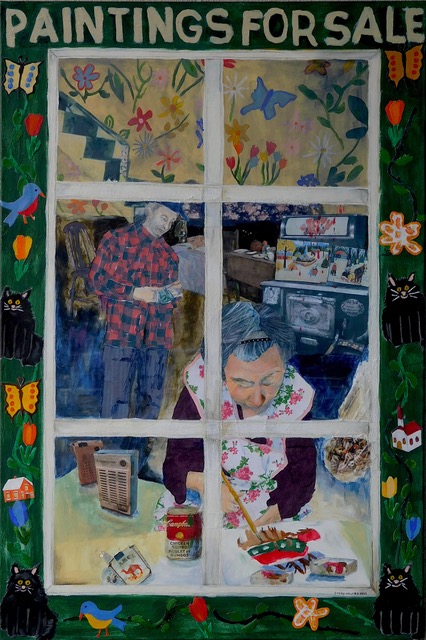
He had been a neighbour of Maud Lewis and a collector of her artwork and had written several comprehensive books about her art. While creating the collage, “Paintings For Sale” I tried to pretend that I was Maud Lewis, struggling with her crippling arthritis, living in freezing cold and isolated surroundings, coping with a husband who stole all her money, who starved and abused her, and took great advantage of her trusting nature, and I went to work painting and collaging the window frame edges of my work just as I imagined Maud would have done.
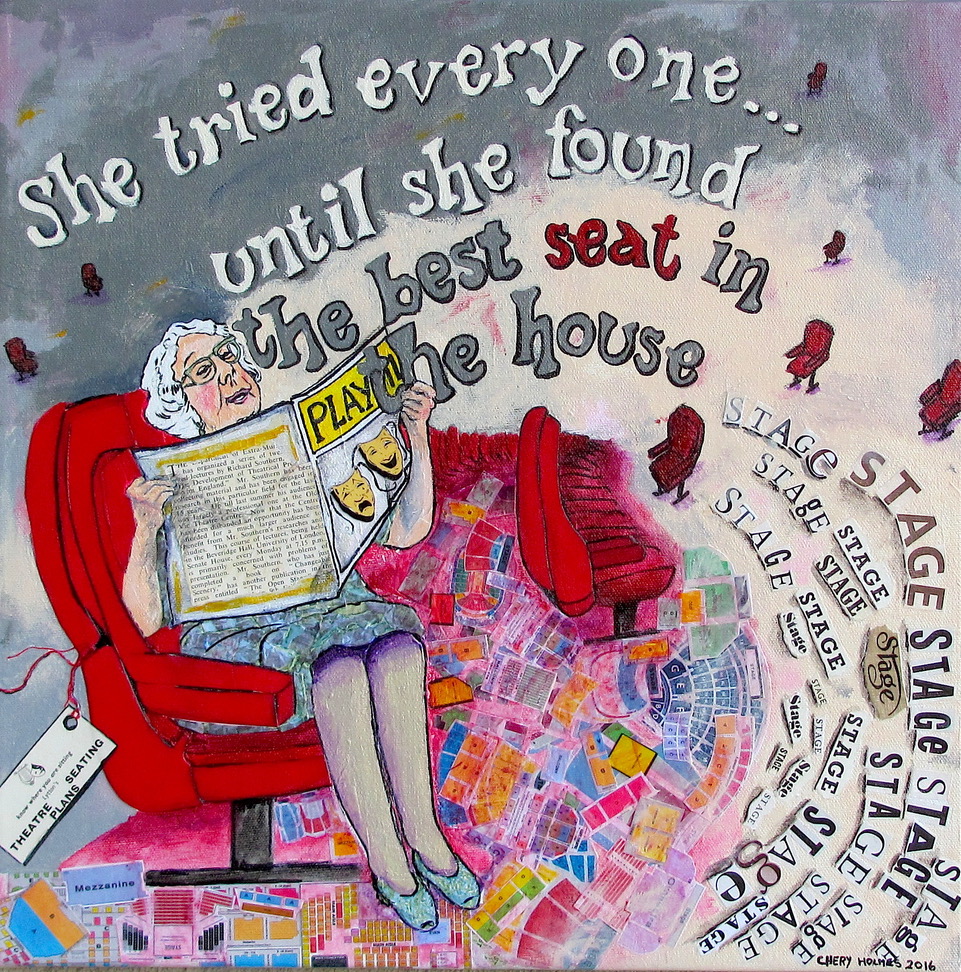
![]()
Contact & purchase info:
Email: chery@ca.inter.net
Diversity and Inclusion: Get on Board
Creativity and Dance: Interview with Nunzio Impellizzeri


Anna Robb is Co-Founder and Managing Director for TheatreArtLife. Anna is an experienced Producer/Production Stage Manager. Her 20-year work history spans Asia Pacific, the Americas, Africa, the Middle East and Europe. She has worked for companies such as Cirque du Soleil, Franco Dragone Entertainment Group, Christie Digital Systems and The Sydney Opera House. Anna was an integral part of the research and development, training and formation, creation and operation of the 250 million dollar aquatic show, The House of Dancing Water in Macau. She also maintained the daily operations of this complex show as the head of Stage Management for 7 years. Anna has been employed on over 70 shows in the areas of concerts, arena events, corporate events, trade shows, musical theatre, plays, dance, circus, outdoor festivals and mega shows. Anna holds a honours degree in Design for Theatre and Television and is passionate about the evolution of the industry.
Read Full Profile© 2021 TheatreArtLife. All rights reserved.

Thank you so much for reading, but you have now reached your free article limit for this month.
Our contributors are currently writing more articles for you to enjoy.
To keep reading, all you have to do is become a subscriber and then you can read unlimited articles anytime.
Your investment will help us continue to ignite connections across the globe in live entertainment and build this community for industry professionals.